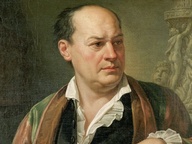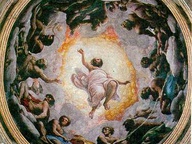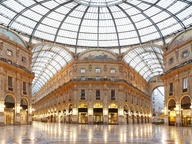Grisha Bruskin. Alefbet: Alphabet of memory
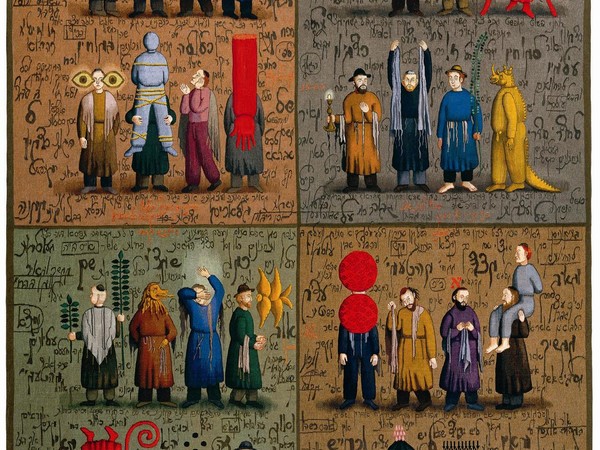
Grisha Bruskin. Alefbet Parte 1, 2004-2006
From 12 Febbraio 2015 to 13 Settembre 2015
Venice
Place: Fondazione Querini Stampalia
Address: Campo Santa Maria Formosa, Castello 5252
Times: Tuesday to Sunday 10am-06pm
Responsibles: Giuseppe Barbieri, Silvia Burini
Organizers:
- Centro Studi sulle Arti della Russia (CSAR) di Ca’ Foscari
Ticket price: free entrance
Telefono per informazioni: +39 041 2711411
E-Mail info: fondazione@querinistampalia.org
Official site: http://www.querinistampalia.org
Collateral Event of the 56th International Art Exhibition - la Biennale di Venezia
A mysterious alphabet composed of 160 characters: angels, animal-faced demons, figures pierced by lightning, men carrying their own shadow on their shoulders or gazing into the secrets of a book.
For his first exhibition in Venice, Grisha Bruskin, one of the great living Russian artists, with an international reputation dating at least from the mid 1980s, has chosen the project “Alefbet”: at the heart of the exhibition are five large tapestries (2,80 x 2,10). These, however, can be reached only after examining the preparatory drawings, gouaches, and six extraordinary paintings that articulate the successive stages of this complex and fascinating “archive of the sign”. This highly condensed synthesis draws on the thousand-years-old Jewish tradition of the Talmud and Kabbalah, presented as a possible and permanent interpretation key of our own history and present.
The stunning visual impact of “Alefbet” cannot fail to fascinate, accompany and draw the viewers through a series of original multimedia apparatuses, designed in collaboration with Marco Barsottini from Camer Anebbia- Milano and aimed at highlighting the extraordinary narrative power of Bruskin’s work.
Grisha Bruskin (Grigory Davidovich Bruskin) was born in Moscow in 1945. In 1968 he graduated from the Moscow Textile Institute and, on the next year, entered the Union of Soviet Artists.
His first exhibition, presented in Vilnius in 1983, was shut down a few days later by order of the Lithuanian Communist Party. On the next year, another exhibition at the Central Workers House in Moscow was shut down one day before the opening by order of the Moscow section of the Communist Party. His first non-censored group exhibition, “The artist and modernity”, was opened to the public in 1987 at the Kashirka exhibition space. On 7 July 1988, during an auction organised by Sotheby’s in Moscow, 7 artworks by Bruskin reached a record price for Russian contemporary art. In the same year, the artist moved to New York, where he started collaborating with the Marlborough Gallery. In 1999, he was commissioned by the German government a monumental triptych titled Life before everything on the occasion of the reconstruction of the Reichstag in Berlin. In 2005, he took part in the major collective exhibition Russia! at the Guggenheim in New York. In 2012, he was awarded the Kandinsky prize for Russian contemporary art with the project H-Hour. Today, Bruskin lives and works between Moscow and New York.
The exhibition, promoted by the Centre of Studies of Russian Art (CSAR) at Ca’ Foscari University of Venice, is curated by Giuseppe Barbieri and Silvia Burini in collaboration with Fondazione Querini Stampalia. The catalogue, published by Terra Ferma, features essays by Evgenij Barabanov, Giuseppe Barbieri, Grisha Bruskin, Silvia Burini, Boris Groys, and Michail Jampolskij.
A mysterious alphabet composed of 160 characters: angels, animal-faced demons, figures pierced by lightning, men carrying their own shadow on their shoulders or gazing into the secrets of a book.
For his first exhibition in Venice, Grisha Bruskin, one of the great living Russian artists, with an international reputation dating at least from the mid 1980s, has chosen the project “Alefbet”: at the heart of the exhibition are five large tapestries (2,80 x 2,10). These, however, can be reached only after examining the preparatory drawings, gouaches, and six extraordinary paintings that articulate the successive stages of this complex and fascinating “archive of the sign”. This highly condensed synthesis draws on the thousand-years-old Jewish tradition of the Talmud and Kabbalah, presented as a possible and permanent interpretation key of our own history and present.
The stunning visual impact of “Alefbet” cannot fail to fascinate, accompany and draw the viewers through a series of original multimedia apparatuses, designed in collaboration with Marco Barsottini from Camer Anebbia- Milano and aimed at highlighting the extraordinary narrative power of Bruskin’s work.
Grisha Bruskin (Grigory Davidovich Bruskin) was born in Moscow in 1945. In 1968 he graduated from the Moscow Textile Institute and, on the next year, entered the Union of Soviet Artists.
His first exhibition, presented in Vilnius in 1983, was shut down a few days later by order of the Lithuanian Communist Party. On the next year, another exhibition at the Central Workers House in Moscow was shut down one day before the opening by order of the Moscow section of the Communist Party. His first non-censored group exhibition, “The artist and modernity”, was opened to the public in 1987 at the Kashirka exhibition space. On 7 July 1988, during an auction organised by Sotheby’s in Moscow, 7 artworks by Bruskin reached a record price for Russian contemporary art. In the same year, the artist moved to New York, where he started collaborating with the Marlborough Gallery. In 1999, he was commissioned by the German government a monumental triptych titled Life before everything on the occasion of the reconstruction of the Reichstag in Berlin. In 2005, he took part in the major collective exhibition Russia! at the Guggenheim in New York. In 2012, he was awarded the Kandinsky prize for Russian contemporary art with the project H-Hour. Today, Bruskin lives and works between Moscow and New York.
The exhibition, promoted by the Centre of Studies of Russian Art (CSAR) at Ca’ Foscari University of Venice, is curated by Giuseppe Barbieri and Silvia Burini in collaboration with Fondazione Querini Stampalia. The catalogue, published by Terra Ferma, features essays by Evgenij Barabanov, Giuseppe Barbieri, Grisha Bruskin, Silvia Burini, Boris Groys, and Michail Jampolskij.
SCARICA IL COMUNICATO IN PDF
COMMENTI

-
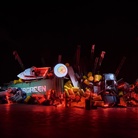 Dal 27 marzo 2025 al 27 luglio 2025
Milano | Pirelli HangarBicocca
Dal 27 marzo 2025 al 27 luglio 2025
Milano | Pirelli HangarBicocca
-
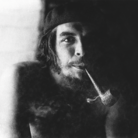 Dal 27 marzo 2025 al 30 giugno 2025
Bologna | Museo Civico Archeologico
Dal 27 marzo 2025 al 30 giugno 2025
Bologna | Museo Civico Archeologico
-
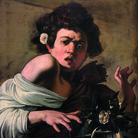 Dal 27 marzo 2025 al 20 luglio 2025
Firenze | Villa Bardini
Dal 27 marzo 2025 al 20 luglio 2025
Firenze | Villa Bardini
-
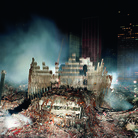 Dal 25 marzo 2025 al 24 agosto 2025
Brescia | Museo di Santa Giulia
Dal 25 marzo 2025 al 24 agosto 2025
Brescia | Museo di Santa Giulia
-
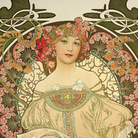 Dal 22 marzo 2025 al 20 luglio 2025
Ferrara | Palazzo dei Diamanti
Dal 22 marzo 2025 al 20 luglio 2025
Ferrara | Palazzo dei Diamanti
-
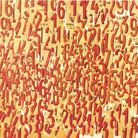 Dal 22 marzo 2025 al 08 giugno 2025
Venezia | Ca’ Pesaro – Galleria Internazionale d’Arte Moderna
Dal 22 marzo 2025 al 08 giugno 2025
Venezia | Ca’ Pesaro – Galleria Internazionale d’Arte Moderna
